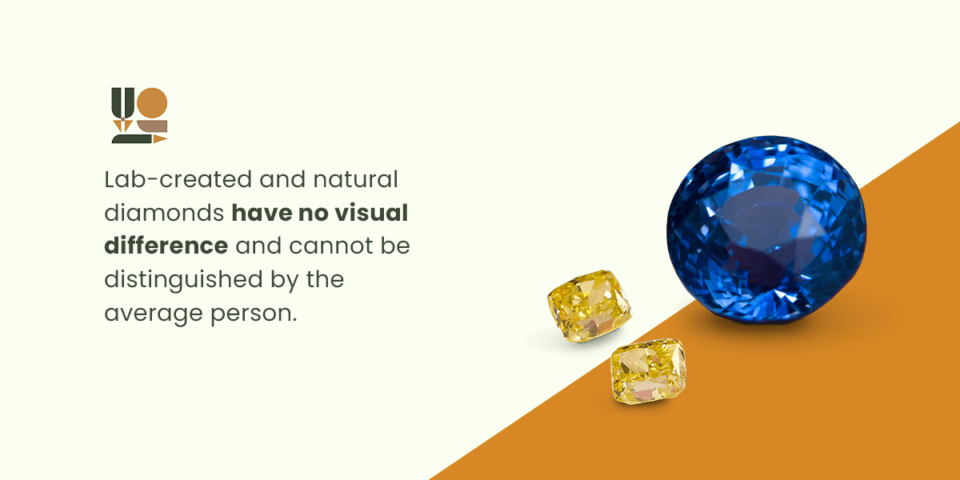Lab-Grown vs. Natural Diamond — What Is the Difference?
Designers create diamond jewelry with two types of diamonds — natural or lab-created. Natural diamonds have been the classic choice used in jewelry for years. Lab-made diamonds are comparatively new in the jewelry industry as an alternative to natural diamonds. Understanding the similarities and differences between each diamond type is important when designing jewelry for yourself or a loved one.
What Is a Lab-Grown Diamond?
A lab-grown or lab-created diamond is man-made in a laboratory instead of mined from the earth. Using techniques such as high-pressure high-temperature (HPHT) or chemical vapor deposition (CVD), labs can create diamonds with the same physical attributes, chemical makeup, and optical appearance as natural diamonds.
Lab-created diamonds are real and regarded as such in the jewelry industry. Like natural diamonds, jewelers appraise them using the 4 C’s. The Gemological Institute of America (GIA) has certified lab-created diamonds since 2007 due to their similar chemical makeup to natural diamonds.

What Lab-Created and Natural Diamonds Have in Common
Lab-grown and natural diamonds have several similarities, including:
- Appearance and color: Lab-created and natural diamonds have no visual difference and cannot be distinguished by the average person. Both types are rated on the D to Z color grading scale.
- Clarity: Lab-grown diamonds have the same inclusions as natural diamonds, which affect the stone’s clarity. Both diamond types’ clarity ratings can range from Flawless (FL) to Included 3 (I3).
- Hardness: Since natural and lab-grown diamonds are made from carbon, they are equally durable to withstand impacts from everyday wear. Both diamond types are rated a 10 on the Mohs hardness scale and are difficult to damage.
- Certifications: The GIA and International Gemological Institute (IGI) subject lab-grown and natural diamonds to the same quality analysis process. Gemologists test the cut, clarity, color, and weight to ensure precision.
Key Differences Between Man-Made and Natural Diamonds
These types of diamonds have many distinguishing characteristics, including the:
- Creation process: Natural diamonds are created beneath the Earth’s mantle layer after carbon atoms have experienced intense pressure and heat for billions of years. Scientists create lab-grown diamonds inside a laboratory using HPHT or CVD. After the diamond is done growing, it is cut and polished for jewelry.
- Presence of nitrogen: Natural diamonds have small amounts of nitrogen, while lab-grown diamonds have none. Gemologists use this nitrogen marker to determine if a diamond is man-made or natural.
- Value: Natural and lab-grown diamonds have different values — how much each costs on the market. Appraisers grade these two diamond types on different value scales since they are created differently. Lab-grown diamonds are typically valued less than natural diamonds at a similar gradation. Many factors can influence the value of diamonds, including the market demand for lab-created and natural diamonds and advancements in lab-grown diamond creation technologies.
- Price: Natural diamonds typically cost more because they are rare and have higher labor expenses from mining, cutting, and polishing. Lab-grown diamonds circumvent this supply chain and cost less as a result.
Get Natural Diamonds in Your Bespoke Jewelry From The Intrepid Wendell
The Intrepid Wendell is a bespoke jewelry company with access to some of the rarest gems in the world, including natural diamonds. With our custom jewelry, you can choose colorless diamonds or fancy colored diamonds and select every other detail of your jewelry. Our designers can create a stunning engagement ring for your partner or other meaningful jewelry pieces.
Contact us to start the design process for your diamond jewelry today.
